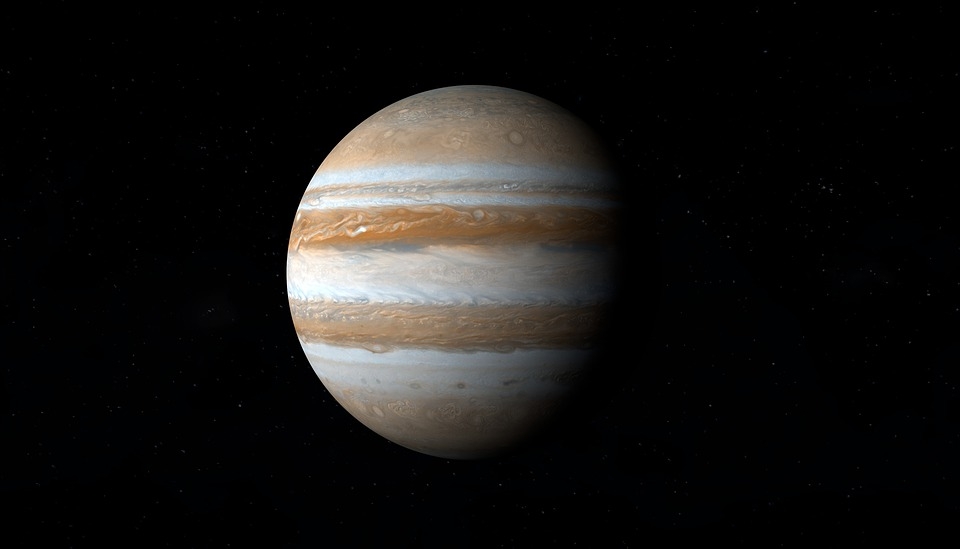The largest planet in the Solar System, the gas giant is known as Jupiter, has often been a planet that space agencies plan to explore but have yet to set foot in. Recently, US space agency NASA released a new image showing the gas giant in all its entirety.
Express reports that NASA released a new satellite image of Jupiter taken from the planet’s southern hemisphere. The image was taken back in February, and at the time the Juno spacecraft that was orbiting Jupiter was somewhere between 49, 500 and 100, 400 kilometers away from the planet. “Not only is Jupiter the largest planet orbiting the Sun, it contains more than twice the amount of material of all the other objects in the solar system combined - including all the planets, moons, asteroids, and comets,” said the agency in a statement.
The agency also noted that Jupiter’s composition is similar to that of a star and that scientists believe that had the planet was at least 80 times bigger when it was formed, it would likely be referred to as a red dwarf than a planet. NASA also explained how hydrogen and helium make up most of the planet’s mass, but the atmosphere is mostly made up of ammonia and hydrogen sulfide.
Many experts believe that one of Jupiter’s roles is to protect other planets such as Earth from asteroid collisions. This is because the planet has a massive gravitational pull that keeps the asteroid belt and in turn, prevents any asteroids from flying about just anywhere. Experts also have a theory that Jupiter may also be pulling in the loose asteroids and comets.
Space agencies have also wondered about the possibility of life thriving not in Jupiter, but in one of its moons like Europa. It was previously reported that Europa, one of Jupiter’s 79 moons can potentially be a place where life can thrive due to the potential water content underneath the ice that protects any life from the harmful radiation caused by the sun.
According to Professor Monica Grady of the Open University and Liverpool Hope University, there is a certainty that there is life under the ice in Europa.



 Black hole, neutron star or something new? We discovered an object that defies explanation
Black hole, neutron star or something new? We discovered an object that defies explanation  Dark energy is one of the biggest puzzles in science and we're now a step closer to understanding it
Dark energy is one of the biggest puzzles in science and we're now a step closer to understanding it  Eggs from men, sperm from women: how stem cell science may change how we reproduce
Eggs from men, sperm from women: how stem cell science may change how we reproduce  Spacesuits need a major upgrade for the next phase of exploration
Spacesuits need a major upgrade for the next phase of exploration  Why some people don't trust science – and how to change their minds
Why some people don't trust science – and how to change their minds  Customizing mRNA is easy, and that's what makes it the next frontier for personalized medicine − a molecular biologist explains
Customizing mRNA is easy, and that's what makes it the next frontier for personalized medicine − a molecular biologist explains  Tatahouine: 'Star Wars meteorite' sheds light on the early Solar System
Tatahouine: 'Star Wars meteorite' sheds light on the early Solar System  Why now is the time to address humanity’s impact on the moon
Why now is the time to address humanity’s impact on the moon  If life exists on Jupiter’s moon Europa, scientists might soon be able to detect it
If life exists on Jupiter’s moon Europa, scientists might soon be able to detect it  The brightest object in the universe is a black hole that eats a star a day
The brightest object in the universe is a black hole that eats a star a day  Synthetic human embryos let researchers study early development while sidestepping ethical and logistical hurdles
Synthetic human embryos let researchers study early development while sidestepping ethical and logistical hurdles  The rising flood of space junk is a risk to us on Earth – and governments are on the hook
The rising flood of space junk is a risk to us on Earth – and governments are on the hook  Six space missions to look forward to in 2024
Six space missions to look forward to in 2024  Archeoastronomy uses the rare times and places of previous total solar eclipses to help us measure history
Archeoastronomy uses the rare times and places of previous total solar eclipses to help us measure history  Genetic diseases: How scientists are working to make DNA repair (almost) a piece of cake
Genetic diseases: How scientists are working to make DNA repair (almost) a piece of cake 






























